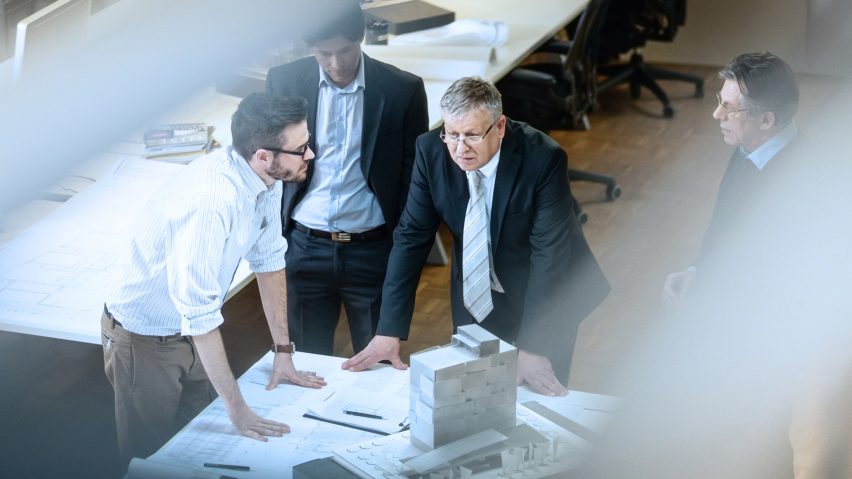
BMI Group report advises architects on how to remain central in the construction process
Dezeen promotion: Europe's largest roofing and waterproofing company BMI Group has published a report suggesting ways architects can "regain their influence" in today's construction industry.
The report, titled The Architect Effect, considers the various difficulties architects are currently facing in their attempts to be innovative, progressive and successful in their role.
It identifies three "gaps" in the industry, followed by three actionable ways that those affected can address these issues to ensure that their role remains relevant, influential and central to the construction process.

BMI spoke to 1,850 architects from across Europe and Asia to identify ways the role of the architect is changing in today's construction landscape.
From this, the company identified what it calls "the architect effect" – defined as the positive outcomes that happen in a construction project when the architect is able to play an active role from start to finish.

"Faced with a much more complex and fragmented process when compared to predecessors, the modern day architect relies on a wider range of skills and aptitudes beyond just their technical competence," said BMI.
"The degree to which they are able to create great outcomes for clients and wider stakeholders can often now rest on their ability to influence other people involved in the process," it continued. "This loss of influence is a major threat to 'the architect effect'."
As BMI explains, this obstacle is most obvious when it comes to determining which innovative materials and solutions would grant the client with more opportunities for the roof of their building.
"It is a new frontier of innovation and potential, so it makes the perfect vessel for an investigation into the changing role of an architect," the company added.

The first of the three key gaps identified in BMI's report, which readers can request for download from the company's website, is "the collaboration gap".
It found that 76 per cent of architects feel like they don't have total freedom to specify materials, systems and technology in construction projects, with one in five feeling like they have "no freedom at all".
The report offers advise on how architects could work more closely with other project members to open up conversations about new materials and solutions, as well as stressing the importance of networking and investing in management skills training.

Secondly, the "information gap", identifies that over one-third of architects feel a lack of case studies prevent them from specifying new materials.
Ways that this "information access barrier" can be overcome, according to BMI, include creating internal initiatives and rewards schemes for employees who create good case studies of their own projects, and getting manufacturers and suppliers in to showcase their materials.

Thirdly, the "innovation gap" found that 51 per cent of architects haven't made use of emerging technology or processes such as Building Information Modelling (BIM), Artificial Intelligence (AI) and 3D printing.
"Following a BIM process is a specific example of where knowledge of digital information exchange and Common Data Environments can bring you into a more influential position within a complex project," the report reads.
"In 27 per cent of the architectural projects where a BIM-model is used, a main contractor is involved. Despite this, architects remain the leading party for updating and accuracy of the BIM-model. This places you in control," it continued.
BMI weaves various roofing case studies and business case summaries into its The Architect Effect report to help readers better understand the "gaps" and the importance of innovative roofing materials.
More information on the work BMI does, and on their report, can be found via the BMI website.
Partnership content
This article was written by Dezeen for BMI as part of a partnership. Find out more about Dezeen partnership content here.